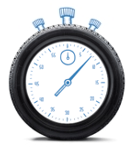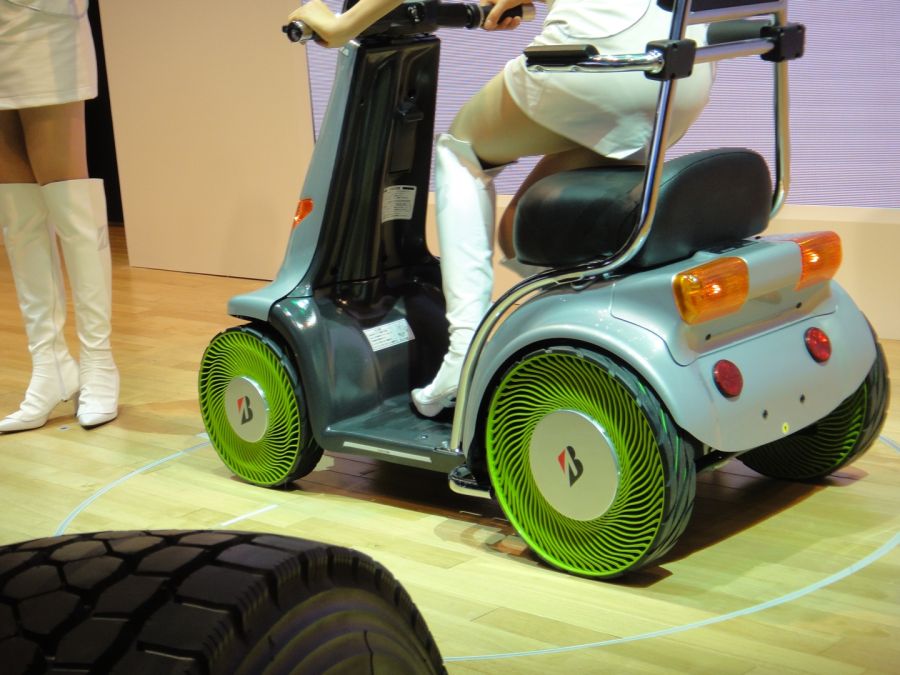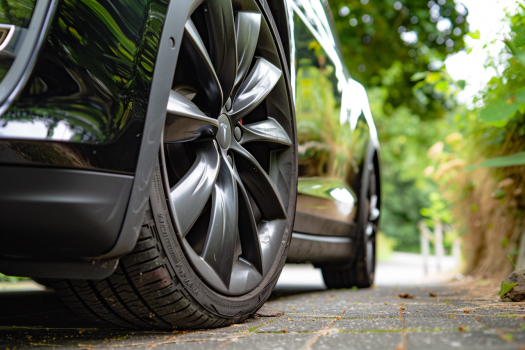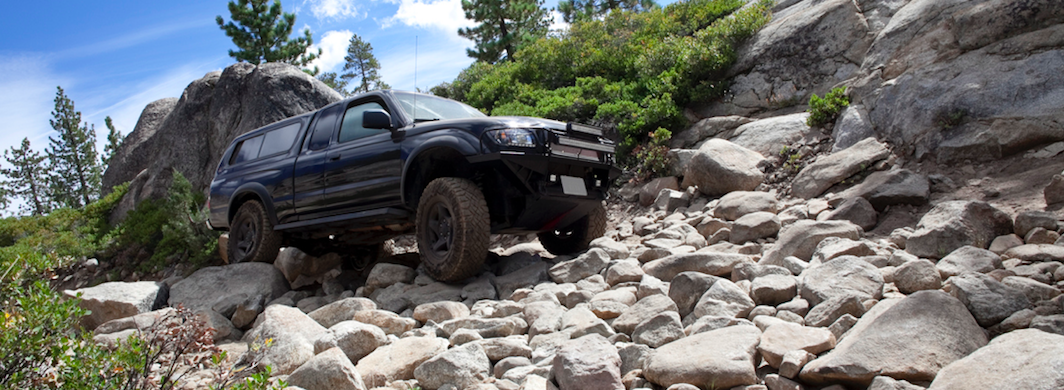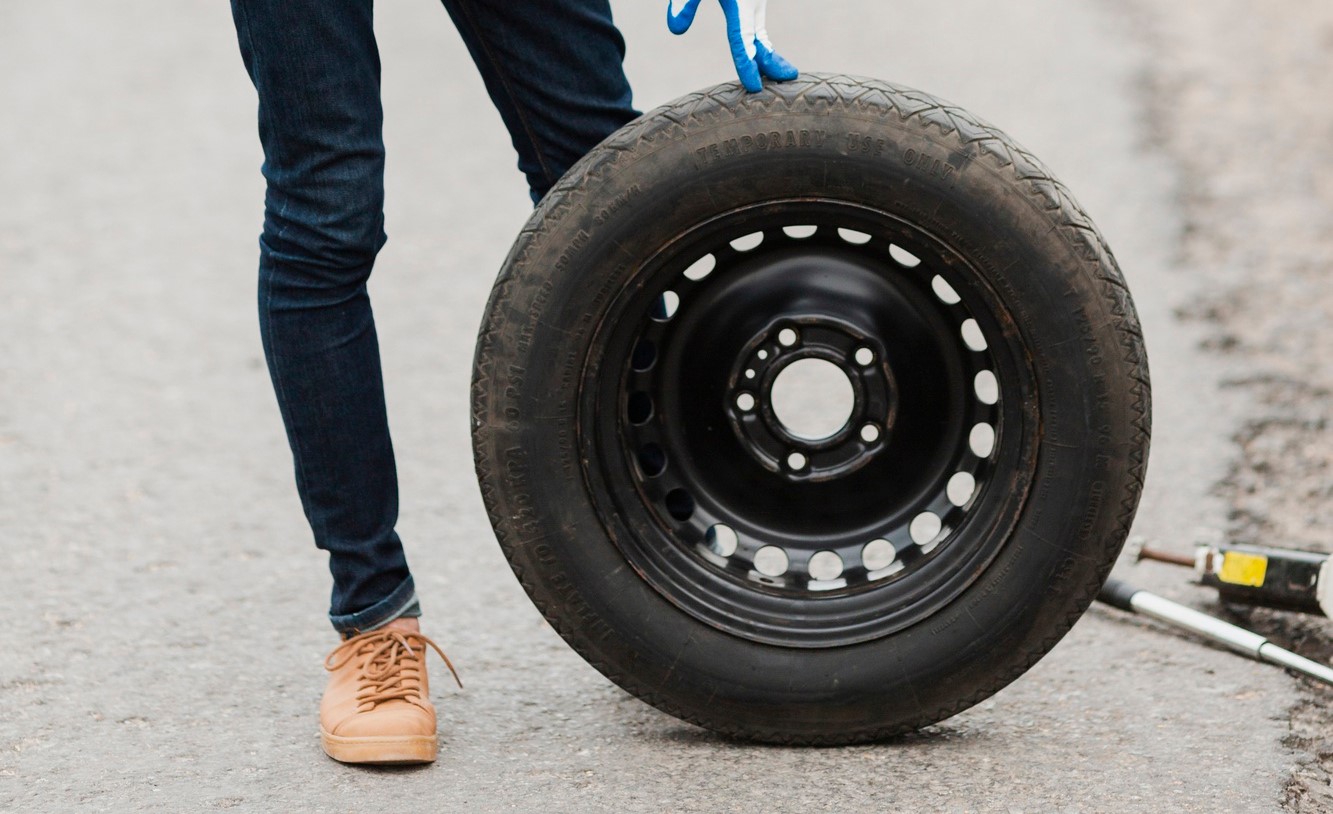Last Updated on April 21, 2024
Get More Out of Every Gallon: Easy Strategies To Improve Fuel Economy
The Crucial Link Between Tire Inflation, Safety, and Fuel Economy!
And by inflation, we don’t mean the rate; we mean the air!
The air in your tires that is. The National Highway Traffic Safety Administration (NHTSA) estimates that proper air pressure would help save not only 1,000,000 gallons of gas per year in the USA but also help prevent 600 deaths and 33,000 injuries.
Going green while saving lives and money is worth talking about.
Here’s the Problem
A new survey reports that Americans tend to neglect their tires. Another study says that the lack of tire care is due to a lack of knowledge on proper tire maintenance.
Both surveys conducted by the Rubber Manufacturers Association (RMA) conclude the following results:
- When 600 vehicles were checked, only 17% of the cars had four properly inflated tires.
- Of over 1,000 people interviewed by phone, 62% did not know how to identify their correct tire pressure, and of those polled, only 20% of men and 9% of women were “tire smart.”
So, let’s take a minute to become tire-smart quickly!
Here’s what you need to know about proper tire inflation:
- Check your tire pressure monthly and before long trips.
- Use your vehicle manufacturer’s recommended inflation pressure. This can be inside the driver’s side door or the vehicle owner’s manual.
- Check your tires when cold before driving. Otherwise, tires become warm when gone, which increases the tire pressure.
Properly inflated tires help optimize vehicle safety and fuel economy, so be tire-smart and save money while being safer on the road.
Tips to Improve Fuel Economy in Every Drive
In today’s world, where fuel prices can be unpredictable and environmental concerns are at the forefront, achieving better fuel economy is crucial for every driver. Whether you’re looking to save money at the pump or reduce your carbon footprint, understanding how to optimize your driving habits and vehicle maintenance can make a significant difference.
Here’s an expanded look at each tip to help you maximize fuel efficiency.
- Keep Your Tires Properly InflatedProper tire inflation is more than just ensuring a smooth ride; it directly influences your vehicle’s fuel efficiency. Under-inflated tires increase rolling resistance, meaning your engine has to work harder, consuming more fuel. By regularly checking and maintaining your tire pressure to the manufacturer’s recommended PSI, you can improve your fuel economy and extend the lifespan of your tires.
- Drive SmoothlyRapid starts and abrupt stops aren’t just hard on your car and fuel tank. Adopting a smoother driving style and being more mindful of your acceleration and braking habits can drastically reduce fuel consumption, especially on highways.
- Lightening your load extra weight can decrease fuel economy, especially on your car’s roof. Every additional 100 pounds, on average, can drop efficiency by up to 1%. You are removing roof racks when not in use and regularly clearing unnecessary items from your trunk or back seat is advisable.
- Regular MaintenanceA well-maintained vehicle is synonymous with fuel efficiency. Regularly changing the oil, replacing air filters, and ensuring your engine is tuned can boost your miles per gallon (MPG). Ignoring maintenance can lead to poor fuel economy, making routine checks essential.
- Use Cruise ControlUtilizing cruise control, especially on long stretches of highway, maintains a consistent speed, preventing unnecessary acceleration and deceleration. This consistency can be a boon for your fuel economy, ensuring you get the most out of every gallon.
- Limit IdlingIdling is a significant waste of fuel. If you’re stopped for more than a minute, like waiting at a drive-through or picking someone up, turning off the engine and restarting when you’re ready to move is more fuel-efficient. Remember, an idling car uses fuel without going anywhere!
- Plan Your Trips. Strategic planning can lead to less time on the road and more savings at the pump. Combining errands or chores into one trip can reduce the amount of driving and, consequently, fuel consumption. Additionally, using apps or GPS systems to find the most direct routes or avoid traffic can improve fuel efficiency.
Fuel Savings Through Proper Inflation
It’s simple physics. When your tires are under-inflated, more of their surface area touches the ground, which means they experience more friction. More friction requires more energy (or fuel) to move the vehicle. The U.S. Department of Energy reports that for every 1 PSI drop in all four tires, gas mileage is lowered by 0.2%. While this might seem small, it increases over time, especially with fluctuating fuel prices.
Enhancing Safety with Properly Inflated Tires
Safety is paramount when driving. Properly inflated tires respond better to sudden turns and stops, ensuring:
- Shorter Braking Distances: Especially vital in emergencies.
- Less Chance of a Blowout: Over or under-inflated tires are more prone to blowouts, especially at high speeds.
- Improved Handling: Properly inflated tires give better feedback, allowing for more accurate steering and better overall control.
Conclusion
Improving fuel economy combines smart driving habits and regular vehicle maintenance. By implementing these tips, not only can you save money, but you also contribute to a more sustainable and eco-friendly environment.
Ready for a tire check or considering a more fuel-efficient tire?
Visit Tire Easy today and optimize your driving experience.
Enhance your vehicle’s performance and fuel economy with the perfect set of tires.
Shop now at Tire Easy for the best deals!
FAQs
How can I maximize my fuel efficiency while driving?
Maximizing fuel efficiency while driving requires a combination of good driving habits and regular vehicle maintenance. Here are some essential tips:
- Drive Smoothly: Sudden accelerations and hard braking consume more fuel. Instead, accelerate gently and brake softly. Maintaining a consistent speed can also help improve fuel efficiency.
- Use Cruise Control: On highways, cruise control helps maintain a constant speed, which can help save fuel.
- Avoid Excessive Idling: If you’re stopped for more than a minute, turning off the engine and restarting when you’re ready to move is often more fuel-efficient.
- Limit Air Conditioning: Using the A/C can increase fuel consumption, so use it sparingly or set it to a moderate temperature.
- Close Windows at High Speeds: Open windows can cause air drag, reducing your car’s aerodynamics and fuel efficiency, especially at high speeds.
- Regular Maintenance: A well-maintained car runs more efficiently. Regularly check tire pressure, change the oil, and replace air filters.
- Limit Heavy Loads: Extra weight can reduce fuel efficiency. Remove unnecessary items from your car and avoid using roof racks unless needed.
- Plan Routes: Avoiding traffic, using more direct routes, and combining trips can help reduce the amount of driving and save fuel.
How can I increase my average fuel economy?
Increasing your average fuel economy is mainly about optimizing the factors that affect fuel consumption. Here are some strategies:
- Opt for a Fuel-Efficient Vehicle: If purchasing a new vehicle, consider fuel efficiency ratings and opt for models designed to consume less fuel.
- Maintain Your Vehicle: Ensure your car is serviced regularly. This includes checking spark plugs, replacing the air filter, and ensuring the engine is tuned.
- Use the Right Oil: Using the manufacturer’s recommended grade of motor oil can improve fuel efficiency.
- Monitor Tire Pressure: Under-inflated tires can decrease fuel efficiency. Regularly check and adjust your tire pressure according to the manufacturer’s recommendation.
- Drive Strategically: Avoid peak traffic times, use apps to find the most direct routes, and combine errands into one trip.
- Consider Alternate Modes: Public transport, carpooling, cycling, or walking can reduce the amount you drive, conserving fuel over time.
- Use High-Quality Fuel: While more expensive, high-quality fuels can enhance engine performance and fuel efficiency.
You can significantly increase your average fuel economy by implementing these strategies and being mindful of how and when you drive.



